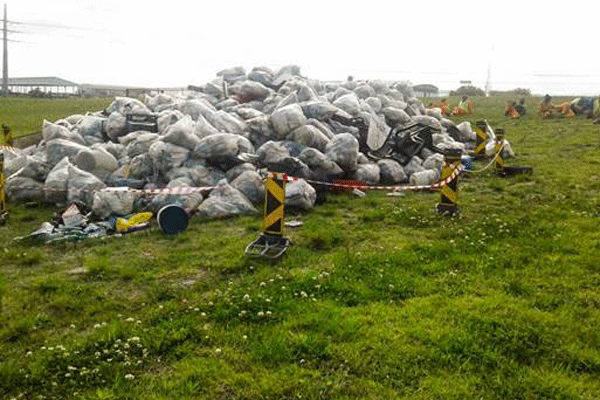
The South African National Roads Agency (SOC) Limited (SANRAL) is calling on all South Africans to be considerate to the environment and stop littering.
Cleaning up the mess is expensive and time-consuming, and has become an unfortunate part of what SANRAL has to do right across the country.
Mpati Makoa, SANRAL’s environmental manager, said: “It is just astonishing what and how much people just throw out of their vehicle windows, with little regard on the impact it has.”
Who litters most
SANRAL reported that a total of 80 601 litter bags were collected during the 2016/17 financial year in the Eastern Cape alone. These were along the N2, R62, Tsitsikamma Toll Plaza, R58, N19, N20, R390, R391 and the R396.
Around 10 cubic metres of litter is collected per day per team on days that debris and litter is collected. In some areas, collection is done once a month, while in some, it is twice a month. All litter is disposed of at registered local municipal landfill sites at each town along the routes.
There are some strange items that have been picked up by SANRAL’s routine road maintenance staff. These include plastic bags full of used nappies, bottles with urine and animal carcasses among others.
Fast food wrappers, boxes and soft drink bottles are typical litter that is collected on a regular basis on national roads. Loads of household litter in refuse bags is also picked up on the side of the road totalling about 6 to 10 cubic meters in this area of the Eastern Cape.
In KwaZulu-Natal, the experience is not much different. The 138km stretch of road from Umdloti to Empangeni is split into four sections. An emerging sub-contractor is appointed for each section to conduct routine road maintenance and this includes litter-picking.
On this stretch, litter picking is done once a month at the beginning of each month. On average on each of the four sections, 350 bags of litter are picked up at the beginning of each month. On the whole stretch of road, a total of 1 400 bags are picked up monthly.
Looking at major routes in the both the Western and Northern Cape, approximately 22 000 bags of litter are collected on average, on a monthly basis. Where possible, a sizable portion is diverted away from landfill and used for recycling initiatives, particularly glass and plastic.
Makoa said: “Picking up litter is part of routine road maintenance duties. It takes 10 days to complete the litter pick-up exercise. All the bags of litter are loaded onto vehicles and offloaded at registered landfill sites along the routes. The strangest items the teams have picked up vary from a wedding ring to strange toys that are best not mentioned.”
Below are the statistics of waste removed on average in the last year for routes in Gauteng, Mpumalanga, Limpopo and the North West, per cubic meters:
| Period | Gauteng | Highveld | S/Kloof
Eland |
Mbombela | Kanyamazane / Montrose | Moamba | Maputo | Machado – Wonderfontein |
| Jan 17 | 68 | 174 | 232.5 | 215 | 198 | 148 | 320.8 | 85 |
| Feb 17 | 67 | 148 | 286.4 | 197 | 210 | 144.9 | 310.2 | 109 |
| Mar 17 | 78 | 206.25 | 291.4 | 293 | 200 | 149.6 | 306 | 124 |
| Total | 213 | 528 | 810.3 | 705 | 608 | 442.5 | 937 | 318 |
Makoa concluded: “If you throw away a piece of litter each day, it can become a veritable mountain of rubbish by the end of the year. Millions of rands are spent just to clean up litter that many people have thoughtlessly tossed out on the streets and other public spaces.
“It also poses a threat to public and ecosystem health as it ends up in water systems and impacting aquatic habitats, clogging our culverts and bridges. This, in turn, increases the frequency and cost of infrastructure maintenance.”

